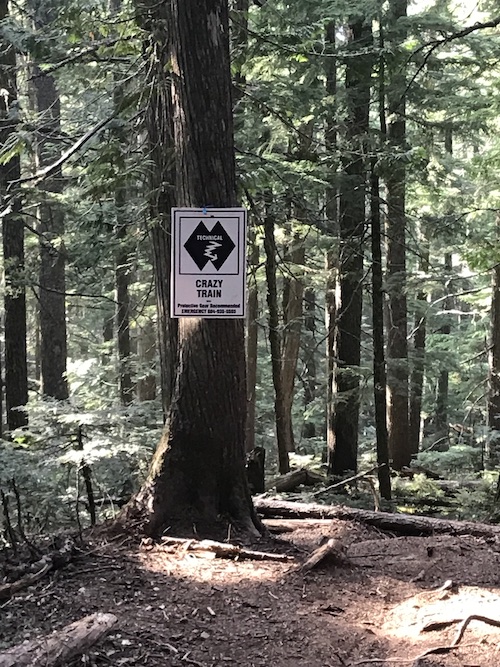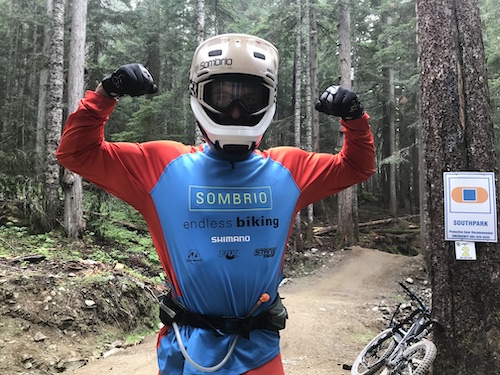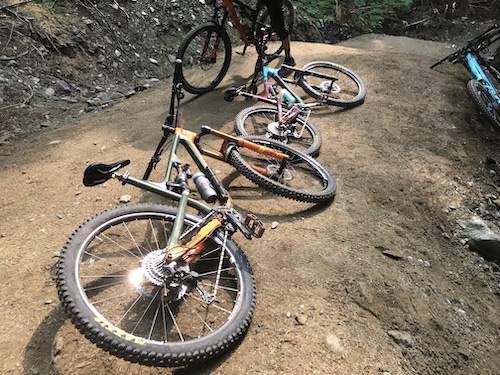My 2018 race season has come to a finish. It hasn’t been an easy one, and for the first time, I didn’t see much of an improvement in my DH Racing Results. As I learn more about enduro and how to train for it, I have seen improvements in the results in that discipline, but a lot of that fitness based, which I had specifically focused on in the “offseason”. Here is a bit of a reflection of the 2018 season and some observations of why maybe my speed seemed to hit a bit of a plateau.
The first two races of the 2018 season were two of the most difficult that I have ever done. I’m not talking specifically of the technicality or physicality of the races, but the fact that they were on another continent and it my first time being outside of Canada/US made it a little more difficult than driving 5 or 6 hours to get to another MTB resort in BC. Food, water, sleep, elevation, and the conditions were all a factor, plus it was my first internationally sanctioned race. I’ve written in much greater detail about my racing in South America, so you can read about them below. I’m not saying that my trip down south made me slower, in fact, I think it did the opposite, but it was a new experience and took almost a month of pre-season riding/training on my local trails out of the year, which I’m not used to and usually get most of my local riding in during this time.
Once I stepped off the plane, I had the option of racing the following weekend in Port Angeles. I opted out of that race and took some recovery time, as well as some time try to get some DH laps in. When I left, there was a lot of snow still on the trails. When I came back, a lot of the snow was gone, but it was a really cold and wet spring, so I couldn’t get a whole lot of training in on Cypress, the mountain used primarily for my DH training.
My first DH race back was the Pro GRT in Port Angeles. I always love going to Port Angeles because it’s a nice little town, the race tracks are always fun, and the crowds go wild. I was feeling pretty decent in practice, but only being on the DH bike a few times before the first race had a bigger impact than I had thought. I ended the race pretty near last on a run with a few mistakes, but I didn’t think I would have been that far behind. I was pretty devastated. The new experiences and conditions I dealt with in South America didn’t help me go as fast as I usually had which I had thought they would have.
The next few races were Canadian National Enduro Series rounds, so it was back to the little bike. I was stoked to get a lot of time on my new 29er on my local trails in, so the DH bike wasn’t used that much at all except for a couple days in the bike park in May. At the CNES races, I really struggled with my fitness. A lot of the courses were really physical and the long climbs and hot weather in the spring took their toll and when it came to the DH stages where I knew I was strong in, I didn’t have the energy to perform at my best. I learned a lot about nutrition and hydration from these experiences, and didn’t have issues with mechanicals or things like that like I had in previous enduro races. I tried to take positives out of every race and use them to learn how to become better in the next races, but I was getting pretty discouraged getting on the lower end of the results sheet, something I hadn’t really experienced in the past few years.
2018 was a busy season, not only for me personally, but for the business I’m working for, Endless Biking. We had more rental bikes, more lessons and tours going on, and that required me to work more than the 3-4 days during the race months than I was used to. This resulted in less riding time than I was used to. While racing enduro, I was always trying to get fitter and maintain the fitness I had improved, so I was constantly trying to go on longer harder intensity rides, rather than shuttling or bike park focusing on getting faster on the downhills. I knew I wasn’t getting as much speedwork in, but I needed to focus on fitness to prepare for the Whistler EWS, which was my main focus for the year.
July was a full on month with DH races almost every weekend. Working Monday to Wednesday, driving all day Thursday, and racing throughout the weekend made it a bit difficult to maintain my “enduro fitness” that I had developed over the spring and early summer months. Before I knew it, it was a week until crankworx and the course for the EWS was about to be released. I went up to Whistler for a couple days to ride all the previous years race trails to try to get a sense of how this years race would be. Right before I left to go back home, I got an email with the course release and I was happy because two of the trails that I had just ridden were going to be raced the following week.
The big day finally came, and I was pretty excited and a bit nervous. You can read the full race recap here, but long story short, I wasn’t feeling as fit as I had hoped for, and that definitely became a factor in this race. Not only were the transfers pretty hard, the stages were even more physical, and I was pretty beat up and disappointed with my performance by the end of it.
After the EWS, I didn’t really want to ride that much. A week after was Canadian Open, the DH race at crankworx. The first practice run in, I had a crash and banged up my left leg pretty bad. The rest of the practice session I just rolled down to try to look at lines for the race. It wasn’t until the third practice day until I could really push for speed, but my leg felt pretty weak still. I wrapped it up good and tight and decided I was going to ignore it on race day. The practice of race day actually went pretty well and I felt fast on track. My race run was average on top, but towards the bottom things fell apart a bit and I started noticing the pain again. I was way back from where I knew I should be in the results
2018 was an up and down year. I got to travel outside North America for my first internationally ranked race, experience new countries and cultures, and race against the best in the world. I was fitter than I had been, and even though I struggled to maintain it throughout the full 7 month DH and Enduro season, I’ve gotten closer to my goals than I’ve ever been. There are some reasons why 2018 was also one of the hardest seasons physically, mentally, and results wise, and I’m still racking my brain trying to figure out why some things happened the way they did.
One thing I struggled with throughout the season, especially towards the end was crashing. Starting the season off in totally different terrain and conditions than what I’m used to makes me not so surprised or disappointed I tasted some Chillian and Columbian dirt. When I got back to racing in Canada, I struggled to find the limit of pushing too hard to cause mistakes, or not pushing hard enough and going slow and getting frustrated. Towards the end, the Whistler EWS. The rain the night before messed with my head a bit, and I tried to ride everything like it was dry, which obviously didn’t work. The physical fatigue also played a factor in how many times I went down.
Reflecting on the year, I also noticed that I spent so much time making sure I was fit enough to race enduros to their full potential, that I wasn’t riding enough fast trails, like the ones on Cypress. I was training mostly on Seymour or Fromme. It sort of clicked that I should have done more riding on the fast trails on Cypress when someone from Vancouver mentioned that the only “race” type trails we have on the shore are on Cypress when we were down in Chile. That’s something I’ll definitely need to work on for 2019.
























